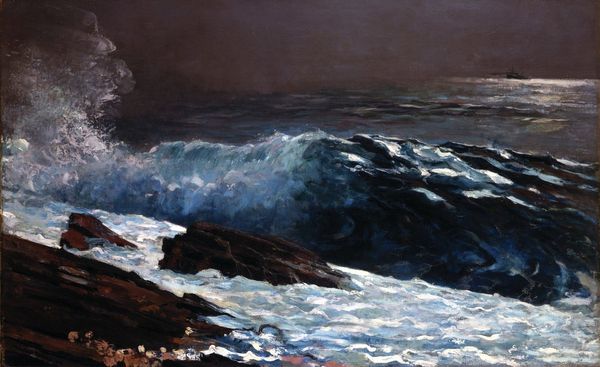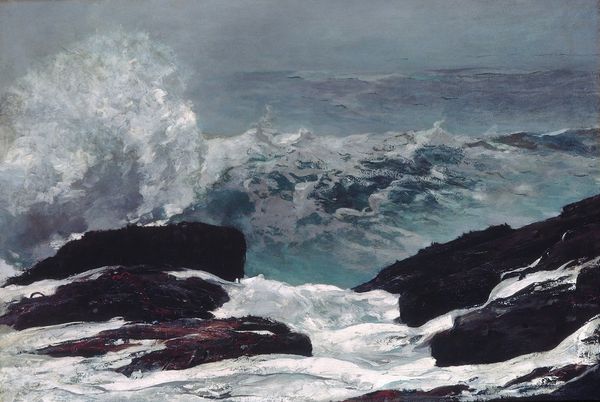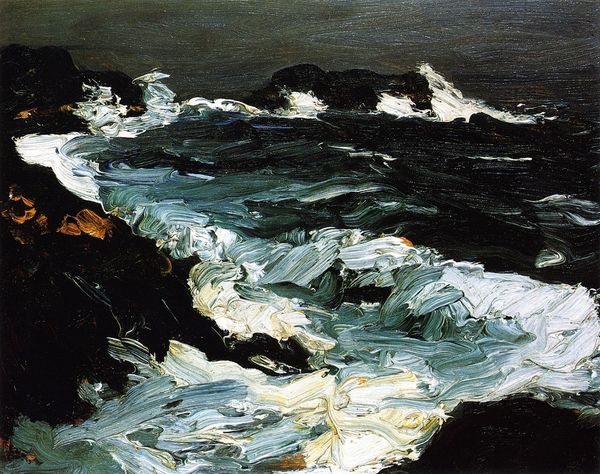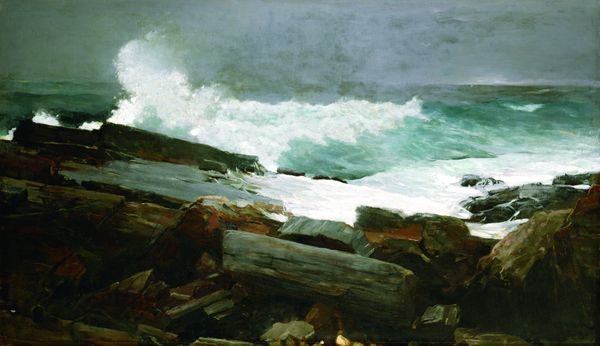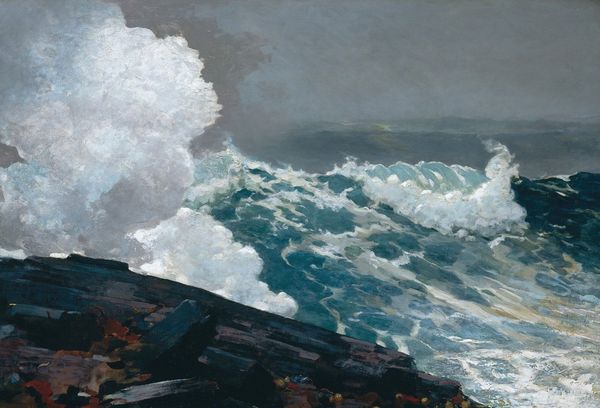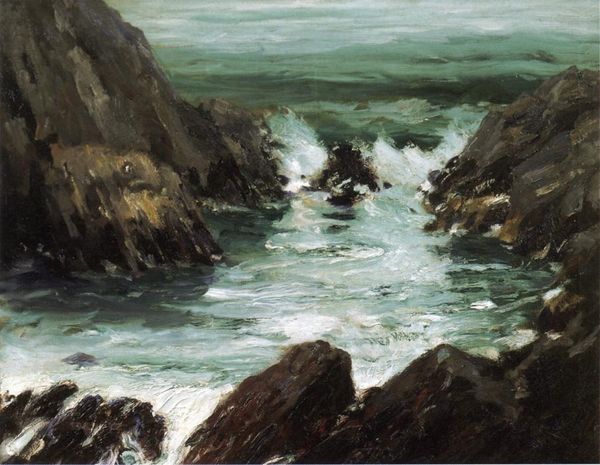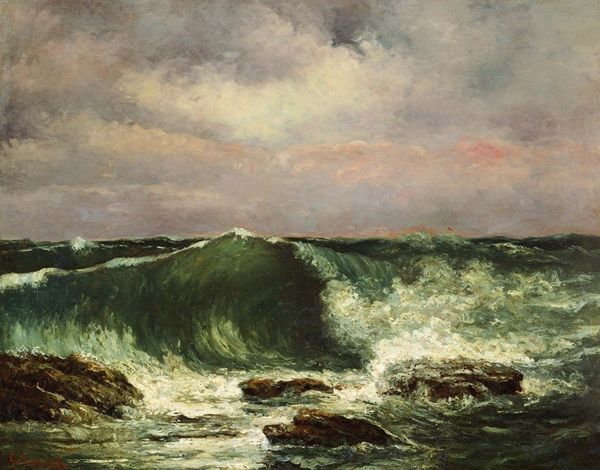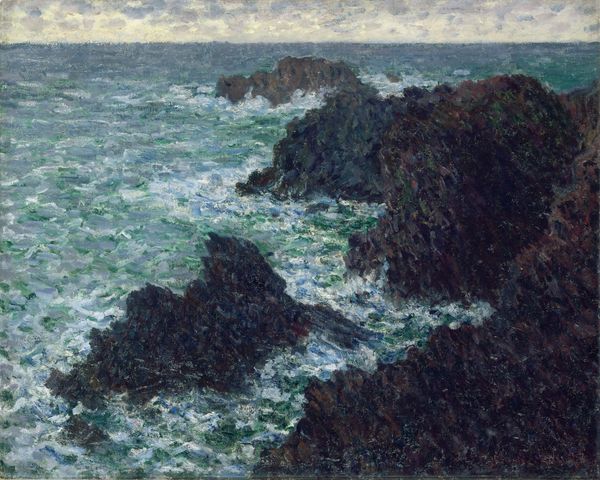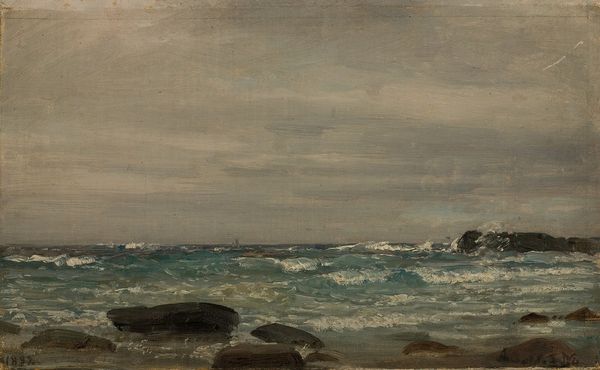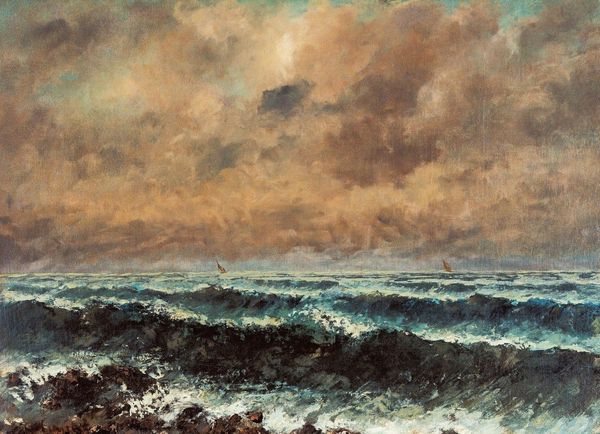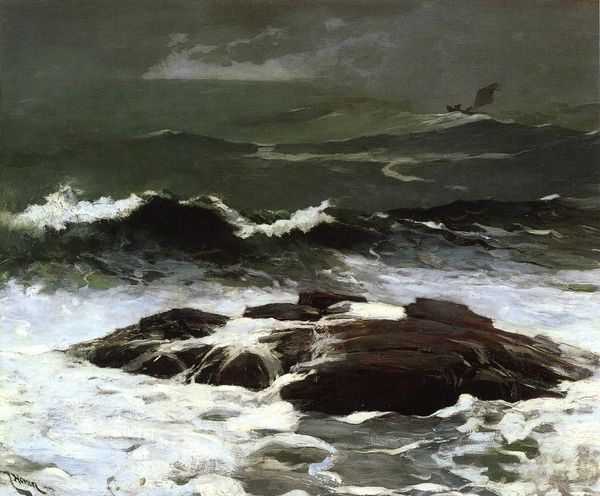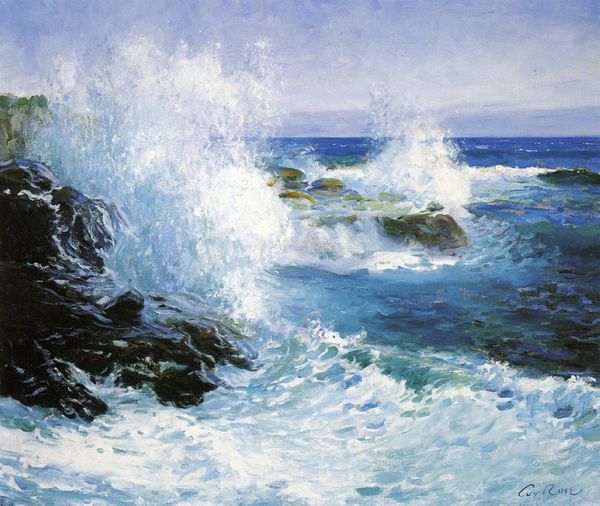
Copyright: Public Domain: Artvee
Curator: Winslow Homer’s "Cannon Rock," painted in 1895, presents a compelling depiction of the ocean's raw power. Editor: My initial impression is one of subdued ferocity; the grey sky and churning teal water feel almost claustrophobic. It’s certainly not a calming seascape. Curator: Absolutely. Homer was fascinated by the sea's relentless energy. Painted en plein air with oil on canvas, the visible brushstrokes and materiality add to that dynamic effect. The labor intensiveness of painting outside shouldn’t be overlooked either; this captures a real struggle with nature. Editor: Yes, the materiality speaks volumes, literally! Given that it was made at the end of the 19th century, when ideas about man's relationship with the natural world were rapidly evolving. The craggy, dark rocks, one could read them as a metaphor for resistance to the forces of industrial progress. Or even representing societal anxieties toward urbanization, industrial pollution and the exploitation of marine resources. Curator: That’s a rich interpretation. We might also think about the paints themselves, their production and sourcing. What did it mean to depict the sea with pigments made by human hands from the earth? It shifts our focus away from idealized Romanticism to something more grounded in industrial-era realities. Editor: Furthermore, who had access to leisure and could produce such images? Did labor laws prevent marine workers or others most affected by the conditions represented, from capturing these scenes or visiting a museum for viewing art like this? The ocean is depicted for many generations mostly through the lens of white middle-class men. Curator: You’ve highlighted an essential point. Homer's mastery and artistic vision need to be placed within the wider social landscape that made its consumption, creation and circulation possible. Editor: It really demonstrates how a seemingly simple seascape carries so much layered history. The act of witnessing transforms us all. Curator: Indeed. “Cannon Rock” isn't just a picture; it’s a document of material interactions, a record of cultural values and their societal implications.
Comments
No comments
Be the first to comment and join the conversation on the ultimate creative platform.
